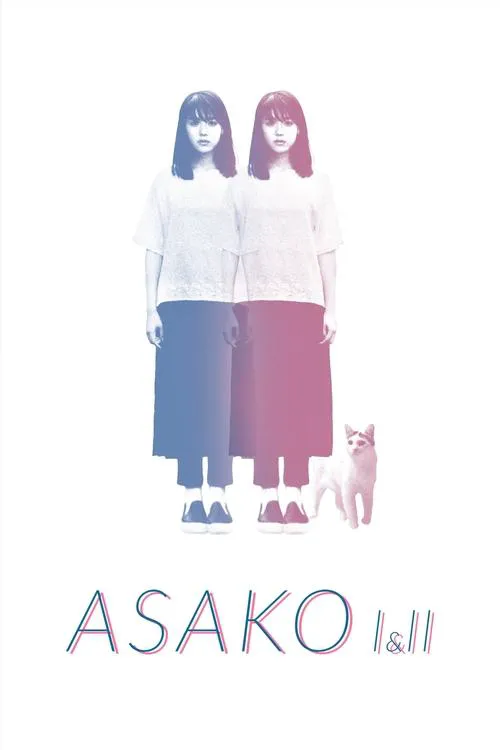Asako I & II

Plot
Asako I & II, a poignant and thought-provoking Japanese romantic drama directed by Ryusuke Hamaguchi, tells the story of a young woman's tumultuous journey through love, loss, and self-discovery. The film is divided into two chapters, which serve as separate yet intertwined narratives, ultimately weaving a rich tapestry of human emotions. The first chapter introduces us to Asako Kostner, an endearing and vibrant young woman played by Erika Karata. She lives in Osaka, where she works as a sales clerk in a textile store. Asako's life is marked by a sense of restlessness, a feeling that something is missing, and she yearns for excitement and adventure. This longing is met in the form of Baku, a free-spirited young man with a playful and carefree nature. Their whirlwind romance sweeps Asako off her feet, and she becomes deeply enamored with the charismatic and enigmatic Baku. However, Baku's sudden disappearance without a word or explanation sends Asako's world crashing down. The emotional turmoil that follows is palpable, as she struggles to come to terms with the loss of the person who had brought her so much joy. This painful experience leaves Asako feeling disillusioned and heartbroken. Two years pass, and Asako finds herself in Tokyo, trying to rebuild her life and find a sense of purpose. She has become increasingly withdrawn and isolated, carrying the emotional scars of her past relationship with Baku. It is in this fragile state that she meets Ryohei, played by Masahiro Higashide, a salaryman who lives in Tokyo. The striking similarity between Ryohei and Baku becomes a pivotal aspect of the story, as Asako finds herself irresistibly drawn to Ryohei's handsome appearance. The irony of this situation is not lost on the audience, as Asako struggles to reconcile her desire for this new person with the lingering presence of Baku in her life. As Akako and Ryohei begin to develop a relationship, the tension between them is palpable, and Asako finds herself torn between two conflicting emotions: her attraction to the present and her nostalgia for the past. The second chapter picks up where the first left off, with Akako grappling with her feelings for Ryohei. As their romance deepens, Asako must confront the reality of her emotions, forcing her to re-evaluate her feelings for both Baku and Ryohei. The complexities of Asako's inner world are expertly woven throughout the narrative, creating a rich and nuanced portrayal of a young woman navigating the complexities of love, heartbreak, and identity. Throughout the film, Hamaguchi masterfully explores the fluid nature of identity and the blurring of lines between reality and fantasy. Asako's perception of Baku and Ryohei is constantly shifting, reflecting the impermanence of human connections and the fragility of emotional bonds. This ambiguity serves to underscore the existential themes that permeate the narrative, inviting the audience to reflect on the meaning of identity and the human condition. One of the most striking aspects of Asako I & II is its attention to the minutiae of human behavior. Hamaguchi's keen eye captures the smallest gestures and interactions between characters, imbuing the film with a sense of authenticity and realism. The performances from the cast, particularly Erika Karata and Masahiro Higashide, are nuanced and convincing, bringing depth and complexity to their characters. In conclusion, Asako I & II is a poignant and thought-provoking film that explores the complexities of human emotions and relationships. Through its nuanced portrayal of Asako's journey, the film encourages the audience to reflect on the meaning of love, identity, and connection in our lives. With its attention to detail and masterful storytelling, Asako I & II is a standout in contemporary Japanese cinema, solidifying its place as a work of quiet, yet powerful, beauty.
Reviews
Recommendations




